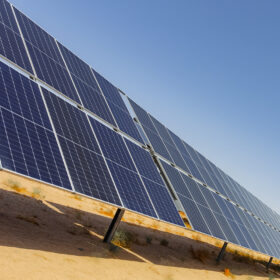Saudi Arabia announces 3.7 GW solar tender
Saudi Power Procurement Co. (SPPC) has announced a request for qualification (RFQ) in relation to 3.7 GW of solar across four projects, as part of the fifth round of the Saudi Arabian government’s renewable energy tender program.
Consortium signs 25-year PPA for 1.1 GW of solar capacity in Saudi Arabia
Masdar, EDF Renewables and Nesma Company have signed a 25-year power purchase agreement (PPA) with Saudi Power Procurement Co. (SPPC) to develop the 1.1 GW Al Henakiyah Solar Project in Saudi Arabia.
New research sheds light on off-grid solar costs in remote villages
An international research group has assessed the economic feasibility of exclusively powering remote villages in Pakistan with off-grid solar-plus-storage projects. They said that their proposed system configuration has a “justifiable” net present cost.
The Hydrogen Stream: Malaysia, Singapore mulling hydrogen pipeline
City Energy and Gentari have agreed to study the feasibility of building a hydrogen pipeline from Malaysia to Singapore.
The Hydrogen Stream: India, Saudi Arabia sign hydrogen agreement
India and Saudi Arabia have agreed to develop electrical interconnections and low-carbon hydrogen, while Masdar has partnered with Boeing ion the sustainable aviation fuel (SAF) industry.
New bio-inspired based algorithm to improve PV output under partial shading
The novel algorithm is based on the behavior of marine animal tunicates and reportedly provides remarkable results in terms of power errors. It was tested in four PV system configurations with five different shade patterns.
The Hydrogen Stream: Gulf nations moving forward with tech cooperation
Acwa Power and Eni have signed a hydrogen development deal, while AFC Energy has signed an agreement with Tamgo to sell hydrogen generators.
ACWA Power reaches financial close for 200 MW solar project in Egypt
With an overall investment cost of US$182 million, the Kom Ombo plant is expected to be commercially operational in January 2024.
Saudi researchers apply distributionally robust optimization to wind, solar project siting
Saudi scientists created a new deep learning technique based on distributionally robust optimization (DRO) to identify the most suitable locations for utility scale wind and solar power projects. They applied the model to Saudi Arabia and found it provides ‘more realistic’ results than deterministic or robust models.
Saudi Arabia to power green hydrogen project with 2.2 GW of solar
Sungrow has agreed to supply inverter technology for a 2.2 GW solar plant under development in Oxagon, Saudi Arabia. The PV installation, which will be the largest in the Middle East upon completion, will provide power for Neom Green Hydrogen Co.’s (NGHC) $8.7 billion green hydrogen project.










